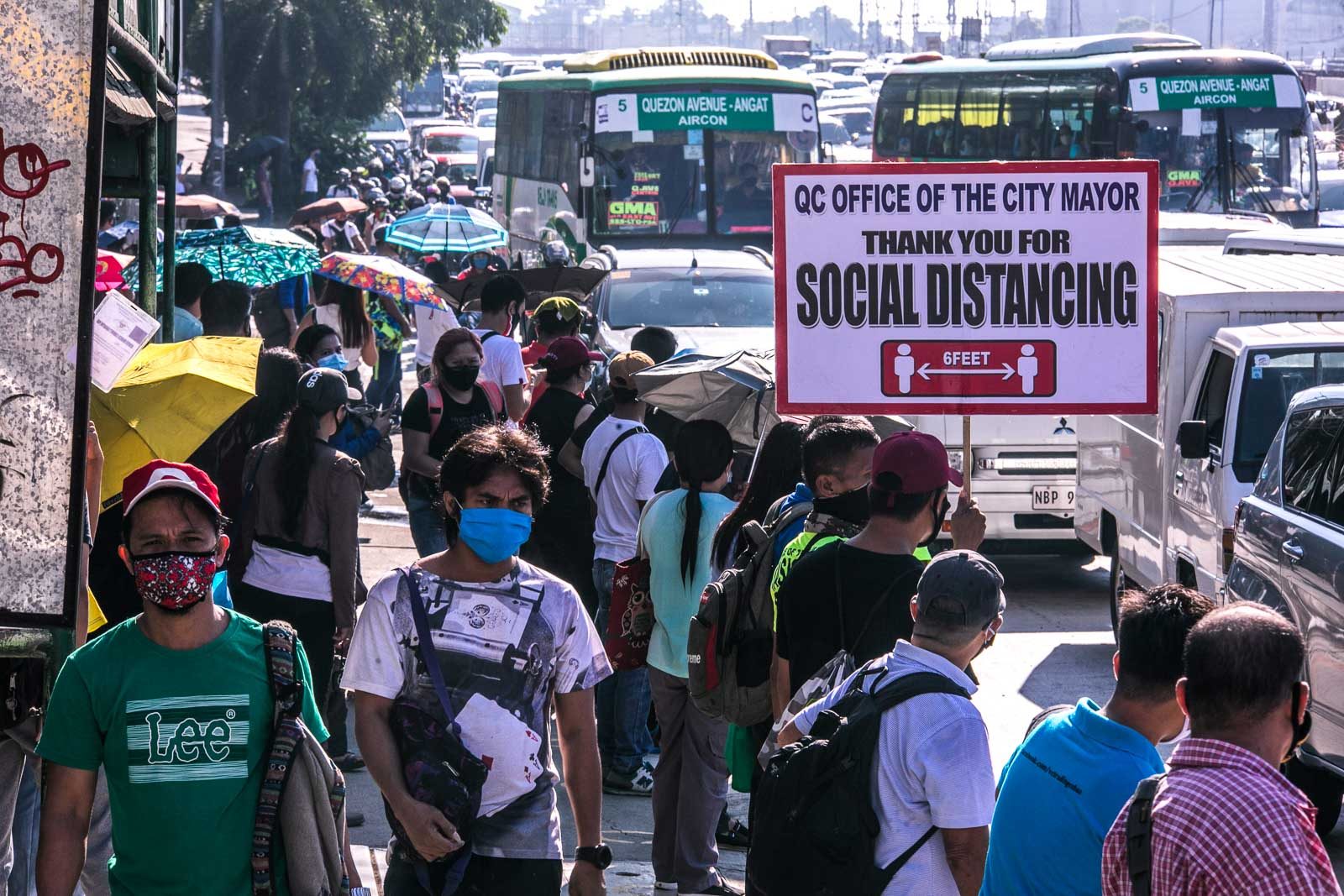SUMMARY
This is AI generated summarization, which may have errors. For context, always refer to the full article.

MANILA, Philippines – Nearly a month after quarantine restrictions were eased, the Philippines reported a significant increase in the number of coronavirus infections, prompting the Department of Health (DOH) to remind the public to continue following essential health protocols that will limit the spread of the virus.
DOH Undersecretary Maria Rosario Vergeire stressed to the public that the basic quarantine rule was to stay home, regardless of the level of quarantine in place in a specific area.
She called on the public to observe the health department’s minimum health standards such as practicing physical distancing, wearing a mask, and practicing frequent hand washing, among others, as conditions that need to be met as restrictions were eased.
“The basic rule in a quarantine, kapag ikaw ay kahit anong level pa ng quarantine – ECQ, GCQ, MGCQ – ang basic principle natin, nakaquarantine tayo. So kung wala kang kailangang gawin sa labas, ‘wag kang lumabas ng bahay. You stay at home,” Vergeire said during a press briefing on Monday, July 5.
(The basic rule in a quarantine is, regardless of the level of quarantine you are in – [enhanced community quarantine, general community quarantine, modified general community quarantine] – the basic principle is you quarantine yourself. So if you do not need to go out, don’t leave your house. You stay at home.)
Vergeire likewise emphasized residents should not travel farther than they needed to, especially to areas where community transmission has been identified.
The same goes for individuals who come from high risk areas and travel into communities where local transmission is not identified: “You’re supposed to quarantine because you are coming from a high risk area,” she said.
Why does this matter? As the nation tries to adjust to the virus, the health department reported a record 2,434 newly reported cases on Sunday, July 6, pushing the total number of confirmed cases past 44,000.
While case numbers continue to undergo validation, the DOH also attributed the rise in cases to increased contact among the population.
University of the Philippine researchers who have closely monitored coronavirus data earlier observed about at 50% increase in cases as the country continued to gradually eased quarantine from one level to the next.
Close watch: In monitoring the outbreak, Vergeire said health officials identified 64 barangays in Cebu City and 314 barangays in Metro Manila found to have clusters of the coronavirus. Closed settings such as the Metro Rail Transit line are also being monitored, after 172 of its workers were found positive for the virus.
Elsewhere, Vergeire said Cebu City, Cebu province, Lapu Lapu City, Quezon City, Mandaue City, and the city of Manila are also under close monitoring after an increase in cases was seen in these areas.
While cases have increased over the last few weeks, Vergeire gave assurances the country’s health system still had the capacity to care for patients with about 40.6% of coronavirus-dedicated beds occupied as of July 2. – Rappler.com
Add a comment
How does this make you feel?
There are no comments yet. Add your comment to start the conversation.